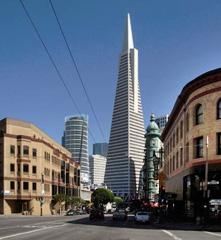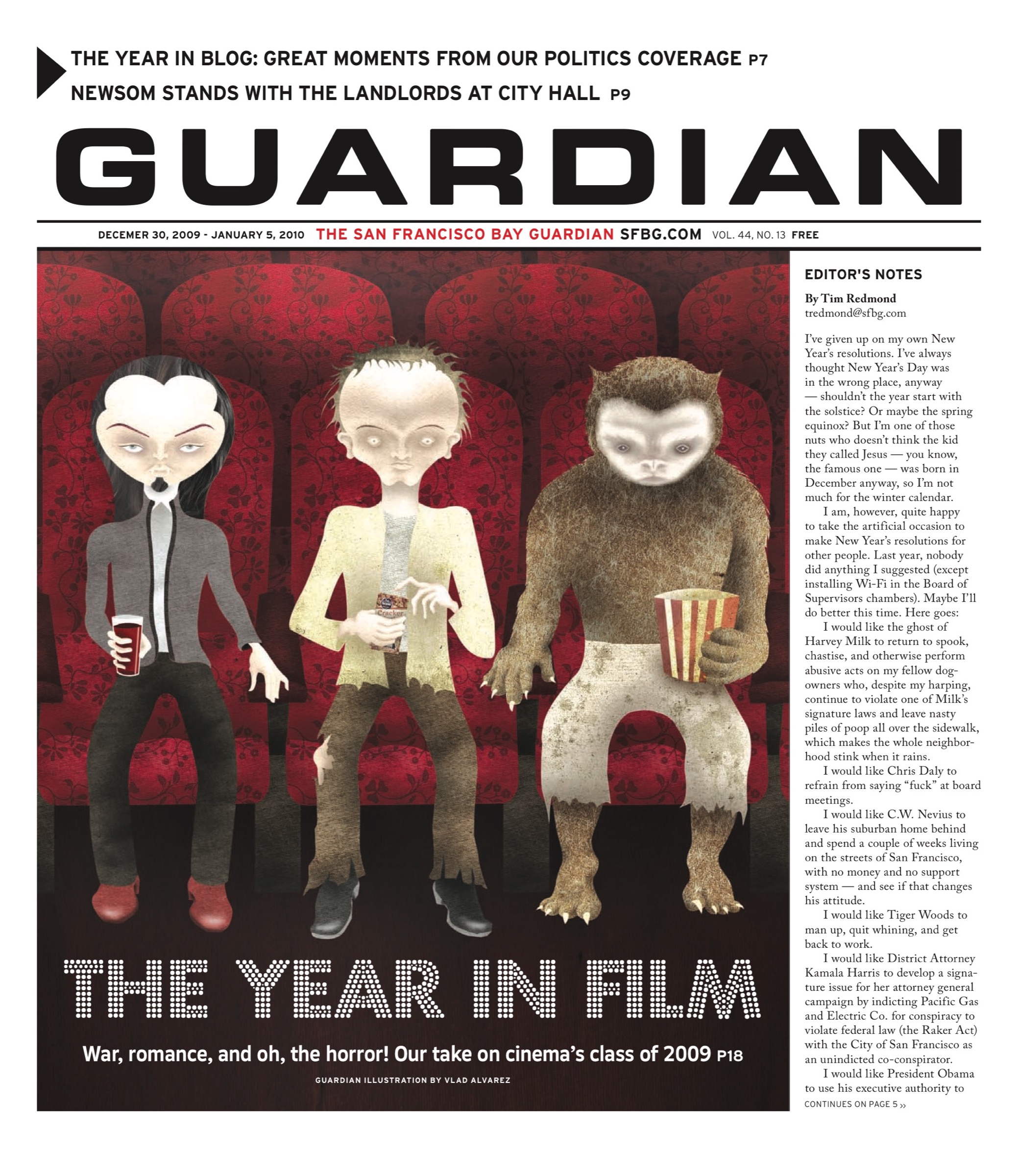› gwschulz@sfbg.com
Before the June 5 special meeting of the San Francisco Planning Commission got underway, Michael Antonini had an announcement.
Dressed in a charcoal suit and red-checked tie, with his white hair combed back over his skull, the longtime commissioner disclosed that he was a part owner of a condominium in the eastern neighborhoods, where a years-long rezoning effort is nearly complete. That means Antonini is among the people who could benefit from increased land values due to zoning upgrades.
As a result, Antonini begrudgingly declared that he would have to recuse himself from hearings involving the eastern neighborhoods until the potential conflict is dealt with.
"Hopefully this can be resolved in the next few weeks and I’ll be able to participate at later hearings," Antonini said at the meeting.
But it was a bit late to be complying with the state’s conflict-of-interest laws: Antonini had already actively taken part in meetings in which the plan was discussed. And Antonini also neglected to mention that after he and his son purchased the condo, he voted on two other projects that appear to be within steps of it.
Public records show that Antonini bought the $515,000 condo at 200 Townsend Street in 2003 with his real estate agent son, John. Commissioner Antonini and his wife own a 25 percent stake in the property through a family trust the couple created in 1997. His son holds the majority interest.
Antonini worked hard to play down his stake in the condo at the June 5 meeting. It’s not an investment property, he made clear to the commissioners. There’s no rent generated from it. He’s a mere minority holder in a family trust that controls the condo, and it was purchased as a residence for his son and his wife.
"Because I did not believe our fractional interest in John’s condo represented a conflict, I did not consider reclusing [sic] myself from projects near the condo," Antonini wrote to the Guardian.
But the laws on this are pretty clear. The state’s Political Reform Act of 1974 prohibits public officials from participating in decisions that will have a "foreseeable material financial effect on one or more of his/her economic interests." It also states that any "direct or indirect interest" worth more than $2,000 poses a potential conflict, for which a 25 percent stake in a half-million dollar condo would seem to qualify.
RECUSE ME
Other public officials in similar situations have recused themselves long before the issue became a potential political liability.
Sup. Bevan Dufty bought into a three-unit residential property on Waller Street with two co-tenants in December 2006. He immediately sought advice from the city attorney, who told him he no longer could vote on the Market-Octavia Plan, a series of land-use changes in Hayes Valley, Duboce Triangle, and elsewhere that was similar in scope to the current rezoning efforts in the eastern neighborhoods. The supervisor also couldn’t vote on a major Laguna Street redevelopment project or on legislation making it easier for seniors to convert rental units to condos.
Antonini told us that "only in the last month" did the city attorney warn some officials involved with plans for the eastern neighborhoods that if they held property in the area, there could be a conflict of interest.
"We’ve been working on [the eastern neighborhoods] for the whole six years I’ve been on the planning commission," he said at the meeting. "It’s a little troubling that this issue of conflict is raised now rather than at the very beginning."
The law does make an exception when the economic interests of the "public generally" could also be enhanced by a government decision such as those that have an impact on a large section of the city like the eastern neighborhoods. But the city attorney’s office concluded for now that the condo indeed may pose a conflict. And in the meantime, Antonini told us that the Fair Political Practices Commission in Sacramento, which helps enforce the state’s Political Reform Act, is being consulted to determine "whether our fractional interest in the condo truly represents a conflict of interest."
The eastern neighborhoods planning process isn’t the only legislation that created a potential conflict for Antonini. The commissioner voted in January 2007 to approve construction of 26 new single-room occupancy units at 25 Lusk Alley, not far from his property at 200 Townsend. The project’s sponsor, Michael Yarne, is a land-use attorney who today works for the mayor’s economic development office. The project was approved, according to meeting minutes.
The project itself relied on a contentious legal loophole in which developers claim their units are "single-room occupancy," a necessity because the area permits residential efficiency hotels where the poor and working-class used to live. Allowing such SRO hotels in areas zoned for light industrial uses enabled the city to preserve some forms of affordable housing. But builders can turn around and lease the opulently large units such as the ones at 25 Lusk, which bear little resemblance to genuine SRO rooms, to well-heeled clients.
"They are allowed where normal residential units are not allowed, because historically SROs were always extremely affordable housing," community organizer Calvin Welch said. "The whole notion of market-rate SROs is a new invention, and that’s why they’re controversial. They’re basically the new version of live-work lofts."
In November 2006, Antonini also voted to approve a liquor license for a new full-service restaurant and wine bar at 216 Townsend, even closer to his son’s condo.
TOO CLOSE FOR COMFORT
State ethics laws say that a public official has a conflict if his or her property comes within 500 feet of a project the official will be scrutinizing and voting on.
Conservatively measuring from the furthest corners of each property, Google Earth puts both the proposed restaurant and SRO within 500 feet.
Bob Stern, president of the Los Angeles–based Center for Governmental Studies and co-author of the state’s Political Reform Act, said a public official could face $5,000 in civil penalties for each conflict-of-interest violation. But it’s not common for the chronically under-resourced FPPC to go after local officials, he said.
Mayoral spokesperson Nathan Ballard wrote in an e-mail that "we take any allegations of conflicts of interest seriously" but added there is a disagreement over whether the "public generally" exception applied to the eastern neighborhoods and that the City Attorney’s Office was seeking additional input from the FPPC.
As for the two projects he voted on near the condo, Antonini apparently told the mayor’s office he had looked into whether 25 Lusk fell inside 500 feet. "Based on his understanding at the time," Ballard wrote, "they didn’t."
That’s a stretch, at best. The projects are in the same block. We walked them off and found that Antonini would have to be splitting hairs to argue that they are outside the boundary — and even in that case, it would be only by a few feet. The rusty red paint job, black trim, and stylish, outsize windows of 200 Townsend are easily viewable from the backside of 25 Lusk.
"If there is a legitimate argument that they did fall within the 500-foot radius, this should be clarified," Ballard stated. "However, given the relative insignificance of the two projects cited in your e-mail and Antonini’s long-standing reputation as an ethical and hard-working commissioner, we don’t have any reason to believe that he would have knowingly and/or willingly violated the state’s Fair Political Practices Act."
But the Lusk Street project was by no means insignificant. "They are highly regulated," Welch said of SROs. "You cannot convert them to tourist hotels without going through a very long and cumbersome process. They are valued for affordable housing so highly that the city regulates their conversion to tourist uses." So instead, the "corporate suites," as Welch calls them, masquerade as SROs. The project was approved in the end, but two commissioners — Christina Olague and Sugaya Hisashi — voted against it.
Antonini told us that he believes 25 Lusk is more than 500 feet away, and as for the restaurant, planning staff recommended approval.
The commissioner told us, "I was the one who brought public attention to the issue of my possible conflict. I believe it is a small issue when compared to my body of work on behalf of San Francisco over the last six years."
The June 5 meeting where Antonini made the disclosure about his son’s condo was part of a long and detailed process that will determine the fate of vast sections of Potrero Hill, SoMa, the Mission District, and Dogpatch. The official planning process for the targeted 2,200-acre area began back in 2001, and the commissioners could approve new zoning plans next month before sending the proposal to the Board of Supervisors.
For much of San Francisco’s history, the city sections poised for rezoning have been home to light industry and blue-collar jobs. But housing has encroached over the last 15 years, and the planning commission is prepared to allow between 8,000 and 10,000 new units over the next 20 years. That will almost certainly increase the value of land in the area.
Residential developers built thousands of pricey condos in the SoMa District during the 1990s, exploiting another divisive zoning loophole that created waves of animosity across the city and aided in a takeover of the Board of Supervisors by a progressive bloc of candidates.
Live/work lofts, as developers called them, were built in areas zoned for light industrial commercial purposes. Wealthy buyers would ostensibly operate businesses out of their homes or live in them as working artists as the zoning required, but few have complied with the letter or — having found ways to narrowly abide by it — the spirit of the law.
"The city turned its head," housing attorney Sue Hestor said. "We have 3,000 units that are supposed to be occupied by artists and probably 90 percent of them are not occupied by artists at all. It’s blatantly illegal."
Antonini has managed to maintain friendships with local moderate Democrats over the years despite being an elected member of San Francisco’s Republican Party County Central Committee. Willie Brown first appointed him to the powerful planning commission in 2002, and he’s been a reliable vote for developers and other large business interests. Mayor Gavin Newsom reappointed him in 2004 and earlier this year tried to engineer Antonini’s election as president of the commission.









